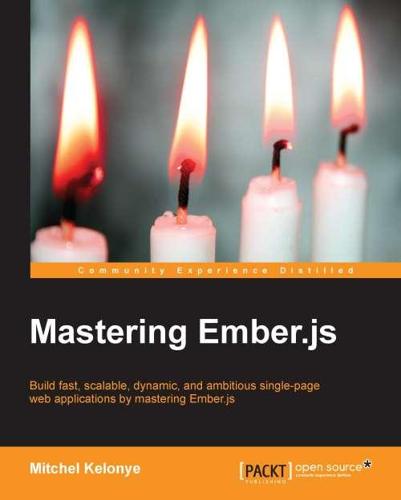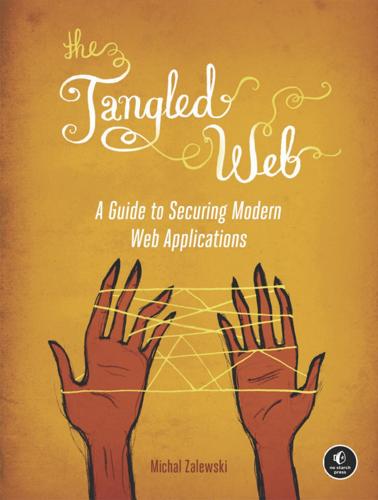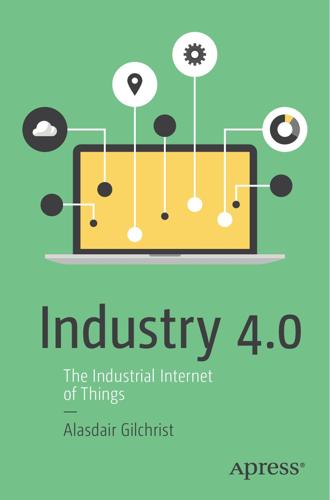WebRTC
description: API definition drafted by W3C that supports browser-to-browser communication without plugins
4 results

This Is for Everyone: The Captivating Memoir From the Inventor of the World Wide Web
by
Tim Berners-Lee
Published 8 Sep 2025
Fortunately, through W3C, I was already accustomed to remote work – in fact, we helped to build the infrastructure for it! W3C had been working on in-browser real-time communication standards since the early 2010s. We published our first working draft of the Web Real-Time Communication (WebRTC) spec in 2011, and this powered the first cross-browser video call in 2013. Following a massive amount of work, W3C published the official standard in 2017 and has been evolving it ever since. Zoom, Google Meet and Microsoft Teams all use the WebRTC standard for large-scale teleconferencing – as does the free videoconferencing alternative Jitsi and a number of other open-source alternatives. Of course, all these services saw massive growth in usage during and after the pandemic.
…
Of course, all these services saw massive growth in usage during and after the pandemic. So did the open-source platforms I support, like Jitsi. It was enormously gratifying to me to see W3C’s work help so many people around the world stay connected with colleagues and loved ones during Covid. To be sure, it had taken ten years of development and a global pandemic for WebRTC to really take off. I was hoping Solid might have a smoother path to acceptance. John and I discussed a variety of strategies to build the Solid ecosystem. One was to offer users a personalized data dashboard that would allow them to see their entire digital footprint at a glance. I would have loved a product like this, and in fact that’s what the Solid pod I’d customized for myself looked like.
…
R. ref1 touchscreens ref1 toxicity of the web ref1, ref2, ref3, ref4 TPAC (Technical Plenary Advisory Committee) conferences ref1 trains ref1 Transactions on Computer Systems (journal) ref1 transatlantic cables ref1 transclusion ref1 transformers ref1 transistors ref1 travel agencies ref1, ref2 tree structures ref1, ref2, ref3, ref4 trust ref1, ref2, ref3 TTL chips ref1 Tunisia ref1, ref2 Turdean, Timea ref1 Turing, Alan ref1, ref2, ref3 Turing Prize ref1, ref2 Turing Test ref1, ref2 23andMe ref1 Twitter ref1, ref2, ref3 2001: A Space Odyssey (film, 1968) ref1 U2 ref1 Uber ref1, ref2 Uganda ref1 UK Brexit ref1 Data Use and Access Bill ref1 trust ref1 Unitarian Universalists ref1 United Nations (UN) ref1, ref2 universal access ref1, ref2, ref3, ref4, ref5, ref6, ref7 universality ref1, ref2 Unix ref1, ref2, 118n, ref1 Unix X Windows ref1 urban design ref1 URLs (Uniform Resource Locators) ref1, ref2, ref3 USA 2016 election ref1 data regulation ref1 open data legislation ref1 PACER ref1 Telecommunications Act 1996 ref1 trust ref1 Usenet ref1, ref2, ref3, ref4 van der Hiel, Amy ref1 van Rossum, Guido ref1, ref2 Vatican ref1, ref2 Verisign ref1 Vezza, Al ref1, ref2, ref3 videoconferencing ref1, ref2, ref3, ref4 videos ref1 ViolaWWW ref1, ref2 viral content ref1 Virtual Library ref1 virtual reality ref1 Visual Display Units ref1 VRML (Virtual Reality Markup Language) ref1 W3C see World Wide Web Consortium Wales ref1 Wales, Jimmy ref1 wallets ref1 see also data wallets; PODS Wanamaker, John ref1 Wayback Machine ref1 Wayve ref1 wearables ref1 web see World Wide Web ‘web 2.0’ ref1 web applications ref1 web clients ref1, ref2 Web Foundation Africa ref1, ref2 closure ref1 Contract for the Web ref1, ref2, ref3 foundation ref1 fundraising ref1 mission ref1, ref2, ref3, ref4 strategy ref1 structures ref1 web anniversary ref1 Web Index ref1 Web Index ref1 Web Science Trust ref1 Web Summit conference, Lisbon ref1, ref2 Web3 ref1 webrings ref1 WebRTC (Web Real-Time Communication) ref1 webs ref1, ref2, ref3 websites early development ref1 first ref1 Wei, Pei-Yuan ref1, ref2 Weigant, Dietrich ref1 Weinstein, Mark ref1 Weitzner, Danny ref1, ref2, ref3 Wells, Pete ref1, ref2 Wequassett Resort, Cape Cod ref1 WHATWG (Web Hypertext Application Technology Working Group) ref1 White, E.

Mastering Ember.js
by
Mitchel Kelonye
Published 19 Oct 2014
In addition, these applications might also need to send data and receive updates to and from the server as quickly as possible. There are a number of web technologies that can be used to accomplish this need: Adobe Flash sockets JSONP polling XHR long polling XHR multipart streaming ActiveX HTMLFile Web sockets Server-sent events WebRTC In this chapter, we will learn how to use the Socket.io (http://socket.io) library, which enables bidirectional communication between web clients and servers. It does this by providing a similar API between the mechanisms just mentioned, excepting the last two. Additionally, it selects the best mechanism to use depending on a number of factors, such as browser support, among others.
…
Facebook newsfeeds and Twitter timelines are good examples of use cases that can benefit from this technology. The following resources can aid in the development of such an application: Sse client library available at https://github.com/segmentio/sse Sse Node.js library available at https://github.com/segmentio/sse-stream WebRTC is a good choice for applications that require peer-to-peer communication, such as audio and video streaming. Setting up Socket.io To aid in mastering Socket.io, we will explore the bundled chapter sample that is a simple IRC-style chat application and the backend of which is built in Node.js, as shown in the following screenshot: The only prerequisite is Node.js, which can be downloaded from http://nodejs.org/download.

The Tangled Web: A Guide to Securing Modern Web Applications
by
Michal Zalewski
Published 26 Nov 2011
The protocol is bootstrapped using a keyed challenge-response handshake, which looks sort of like HTTP and which is (quite remarkably) impossible to spoof by merely exploiting a header-splitting flaw in the destination site. Following a successful handshake, raw data may be exchanged bidirectionally within the resulting long-lived TCP connection, with each message enveloped inside a simple protocol frame. The mechanism is supported in WebKit and is probably coming soon to Firefox. P2P networking WebRTC[260] is a proposed set of APIs and network protocols designed to facilitate the discovery of and communication with other browsers without the need for a centralized server infrastructure. The primary use case for such a protocol is the implementation of IP telephony and video-conferencing features within web apps.
…
See World Wide Web, The Boring Period: 2000 to 2003 WebDAV, CONNECT WebGL, Plug-in-Based Application Frameworks, Plug-in-Based Application Frameworks WebKit parsing engine, Hypertext Markup Language, Inheritance for data: URLs, Inheritance for javascript: and vbscript: URLs, Character Set Inheritance and Override, CORS Request Types, Current Status of CORS, Content Security Policy, Strict Transport Security, XSS Filtering, URL- and Protocol-Level Proposals, Content-Level Features character set inheritance, Character Set Inheritance and Override CORS in, CORS Request Types, Current Status of CORS data: URLs in, Inheritance for data: URLs history.pushState() API, URL- and Protocol-Level Proposals Refresh redirection to javascript:, Inheritance for javascript: and vbscript: URLs Strict Transport Security support, Strict Transport Security Worker API, Content-Level Features XSS-detection logic, XSS Filtering WebRTC, URL- and Protocol-Level Proposals WebSocket API, URL- and Protocol-Level Proposals WebSQL API, Content-Level Features Western European code page (ISO-8859-1), Header Character Set and Encoding Schemes WHATWG (Web Hypertext Application Technology Working Group), Web 2.0 and the Second Browser Wars: 2004 and Beyond whitelists, Browser- and Plug-in-Managed Site Permissions whitespace, Understanding HTML Parser Behavior, Character Encoding window handles, Changing the Location of Existing Documents window splicing, Window-Positioning and Appearance Problems window.alert() API, Pop-Up Filtering window.blur() function, Connection Limits, Window-Positioning and Appearance Problems window.confirm() API, Pop-Up Filtering window.createPopup() API, Window-Positioning and Appearance Problems window.focus() method, Window-Positioning and Appearance Problems window.moveTo() method, Window-Positioning and Appearance Problems window.name property, of frames, Changing the Location of Existing Documents window.notifications API, Content-Level Features window.open() function, The Document Object Model, Life Outside Same-Origin Rules, Connection Limits, Connection Limits, Dialog Use Restrictions, Window-Positioning and Appearance Problems window.print() API, Pop-Up Filtering window.prompt() API, Pop-Up Filtering window.resizeTo() method, Window-Positioning and Appearance Problems window.showModalDialog() API, Connection Limits windows, Life Outside Same-Origin Rules, Changing the Location of Existing Documents, Changing the Location of Existing Documents, Connection Limits, Dialog Use Restrictions and frame interactions, Life Outside Same-Origin Rules anonymous, Changing the Location of Existing Documents creating new in browser, Connection Limits positioning, Dialog Use Restrictions Windows Media Player, Audio and Video, Document Rendering Helpers, Adobe Flash Windows operating system, The First Browser Wars: 1995 to 1999, Web 2.0 and the Second Browser Wars: 2004 and Beyond Windows Presentation Foundation, Microsoft Silverlight, XML Browser Applications (XBAP) Wireless Application Protocol suite (WAP), Wireless Markup Language Wireless Markup Language (WML), Wireless Markup Language WMF file format, Type-Specific Content Inclusion WML (Wireless Markup Language), XML User Interface Language WML Script (WMLS), and JavaScript, XML User Interface Language Worker API, Content-Level Features World Wide Web, A Brief History of the Web, Tales of the Stone Age: 1945 to 1994, The First Browser Wars: 1995 to 1999, Document Rendering Helpers, A Glimpse of Things to Come, A Glimpse of Things to Come browser wars, The First Browser Wars: 1995 to 1999, A Glimpse of Things to Come history, A Brief History of the Web threat of hostile takeover, Document Rendering Helpers World Wide Web Consortium (W3C), The First Browser Wars: 1995 to 1999, The Boring Period: 2000 to 2003, Hypertext Markup Language, Current Status of CORS creation of, The First Browser Wars: 1995 to 1999 Microsoft and, Current Status of CORS worms, The Boring Period: 2000 to 2003 WWW-Authenticate header, HTTP Cookie Semantics, HTTP Authentication wyciwyg: scheme, Protocols Claimed by Third-Party Applications and Plug-ins X X-Content-Type-Options header, Character Set Handling X-Content-Type-Options: nosniff header, Unrecognized Content Type X-Frame-Options header, Unsolicited Framing, Primary CSP Directives XAML (Extensible Application Markup Language), Properties of ActionScript Xanadu, Tales of the Stone Age: 1945 to 1994 XBAP (XML browser applications), Sun Java XBL bindings, Basic CSS Syntax XDomainRequest API, Current Status of CORS, XSS Filtering XHTML, The Boring Period: 2000 to 2003, Hypertext Markup Language, The Battle over Semantics, Entity Encoding, Entity Encoding and HTML entities, Entity Encoding minimal fault-tolerance of parser, The Battle over Semantics named entities, Entity Encoding syntax, Hypertext Markup Language XML (Extensible Markup Language), Document Parsing Modes, Document Parsing Modes, Entity Encoding, XML User Interface Language, XML User Interface Language, Wireless Markup Language, Other Developments <!

Industry 4.0: The Industrial Internet of Things
by
Alasdair Gilchrist
Published 27 Jun 2016
Before mainstream digitization, back in the 2000s, companies could be contacted by telephone or e-mail. Today, companies have click to chat or call to communicate with a live support agent on their web sites, or they have online forms to open service tickets on their sites for customers’ convenience. Other technologies are gaining acceptance, such as video calls using WebRTC, which enables a customer to contact a support center via a browser using video chat. This is proving important when technical support agents need to actually see the product and can make fault diagnosis and fault resolution much quicker. Similarly, the massive growth in mobile apps has led companies to produce their own apps, which further integrates the customer with the company and provides even more intelligence such as location.